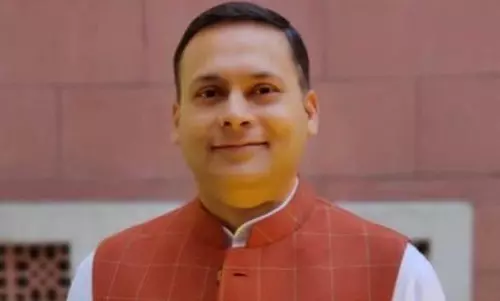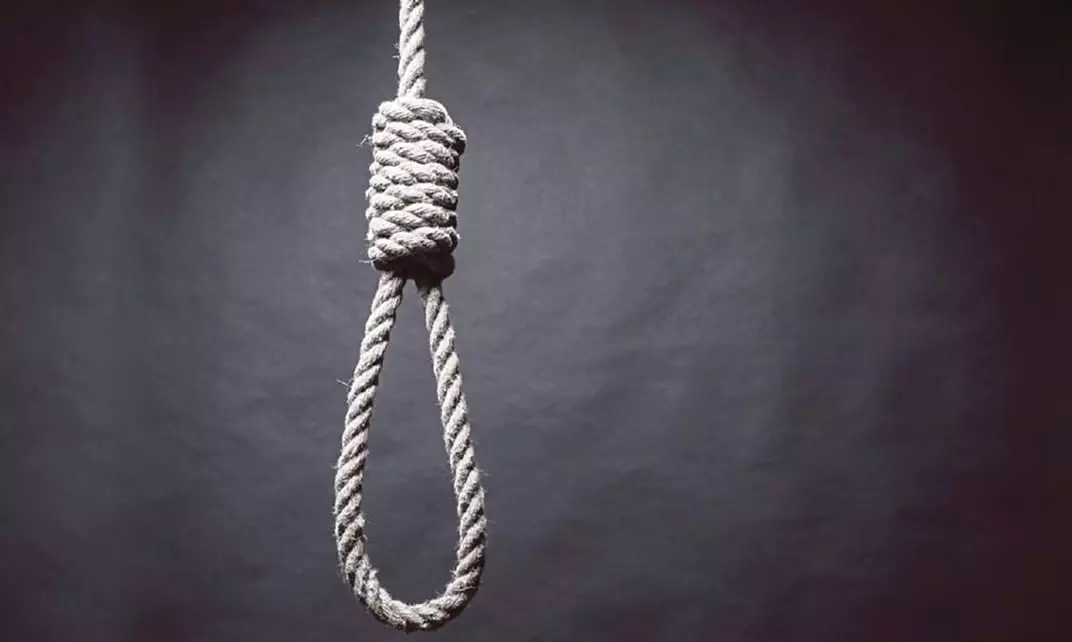
Capital punishment on a record high in India, no of death row convicts highest in 17 years says report
text_fieldsIn India, the year 2022 saw death penalties hit a record high in over two decades, says a report published by Project 39A, an advocacy group with the National Law University (NLU), New Delhi.
With 165 death sentences imposed at the end of 2022, it is the highest in a year in over two decades, read the Annual Death Penalty Report with the total of convicts on death row coming up to 539, the highest in 17 years.
While Uttar Pradesh accounted for the highest death row inmate population which came to 100, Gujarat and Jharkhand followed with 61 and 46 respectively.
Capital punishment is imposed for several crimes with life imprisonment provided as an alternative, allowing the trial courts to make the decision.
The Supreme Court upheld the constitutional validity of the death sentence in its landmark Bachan Singh judgment in 1989, on the condition that it could be imposed only in the “rarest of rare” cases.
However, the data regarding the trial court judgements shows that the death penalty is often imposed without adhering to the guidelines set by the Supreme Court, the framework laid down in the Bachan Singh judgment and the precedents on the issue, reports ThePrint.
A look at the judgements also shows that there is a lack of understanding of the meaning of the phrase “rarest of rare’, which is the only kind of case that can be led to the death penalty.
The broad framework in Bachan Singh asks courts to weigh the circumstances of the offence and the offender, while also considering the probability of reformation, and the suitability of the alternative option of life imprisonment, reports ThePrint.
However, what exactly constitutes the “rarest of rare cases” remains unclear. While some judgements link it to public opinions or to the “collective conscience” being shocked, others have ruled that the “‘rarest of rare policy may not be essentially tuned to public opinion”.
This disagreement over the content and application of the “rarest of rare” framework, has therefore led to arbitrariness in the process.
According to legal experts, the trial courts are unaware of what the law on death penalty sentencing requires or, they ignore it despite being aware.
A report published by Project 39A on the 306 death sentences awarded from 2018 to 2022, showed that nearly 10 percent of the judgments did not mention what made the Bachan Singh case fall under the “rarest of the rare” category while nearly 70 percent of these judgments classified the case as a “rarest of rare” solely on the basis of aggravating circumstances relating to the crime.
Several trial courts have continued to award the death penalty in a similar manner.
In instances such as the death penalty of 31-year-old IIT Bombay graduate Ahmad Murtaza Abbasi in January this year for his attack on policemen at the Gorakhnath temple in Uttar Pradesh’s Gorakhpur district last year and the death penalty awarded to Haleem and Rizwan both convicted for the kidnapping and gangrape of a minor by a special Protection of Children from Sexual Offences (POCSO) court in Uttar Pradesh in November last year, the courts didn’t mention how the cases fell in the “rarest of rare” category.
Anup Surendranath, a professor of law at NLU Delhi and executive director Project 39A, feels that there is an “ever-widening gap” between the Supreme Court’s guidelines and what the trial courts are doing.
According to him, trial court judgments sentencing convicts to death row are riddled with “erroneous procedure, incorrect application of law and arbitrariness”, reports Theprint adding none of the possible explanations for this “cast the district courts in a good light”.
“Either they are unaware of what the law on the death penalty sentencing requires or, despite being aware, they ignore it because it has stringent and demanding requirements,” Surendranath explained as quoted by ThePrint.
“How should judicial academies design their training to ensure judges are aware of the requirements of the law? Considering that the law is embedded in society, do judicial academies do enough to sensitise judges to keep their biases away from decision-making? Are trial courts well-equipped with resources to meet the demands of the formal law? These are some of the many questions that we need to ask,” Surendranath said.
It is noteworthy that over the years, the death penalty has started to be equated to “justice” itself.
Justice Madan B. Lokur, a former Supreme Court judge, also feels that “the heinous and macabre nature of crimes, and their reportage in the media, seems to have increased over the years” which “has resulted in a heightened reaction from the victim’s family, obviously, and also from society”.
“The only demand earlier was for justice. Now it is for the death penalty, which is equated with justice,” he asserted. “The trial judge is placed under a subliminal pressure to award a death sentence disregarding the Supreme Court guidelines” he told ThePrint.
The Bachan Singh judgement had asserted that the judges should not become “oracles or spokesmen of public opinion”.
However, according to the Project 39A report published in October last year, among 282 death sentences imposed between 2018 and 2022, more than 77 percent of the judgments mentioned “society-centric goals” such as “collective conscience” or “society’s cry for justice”, says the report.
There are also Supreme Court judgments such as the one that upheld the death penalty for Dhananjoy Chatterjee, who was hanged in August 2004 that have held “collective conscience” or “society’s cry for justice” to be valid justifications for imposing the death sentence.
The Lucknow court’s judgment in the Gorakhnath temple attack case also mentions the Dhananjoy Chatterjee judgment. The trial court said this Supreme Court judgment had laid down the law that “courts should impose appropriate punishment proportional to the crime committed so that the court’s decision can show the disgust for the crime by the public”, reports ThePrint.
Justice Lokur said he does not believe that there is anything like a “collective conscience”. “It’s a wonderful journalistic phrase, nothing more. How does a judge decide that there is a collective conscience and what it desires,” he asked.
Citing that the trial courts have adopted a “crime centric-approach” to the death penalty, Surendranath said that, “the layperson on the street might want that crime-centric approach to determining punishment, but that’s not what the law requires. Ultimately, our judges must realise that their duty is to give effect to the law and not to the collective conscience or public opinion,” he said.
According to the Project 39A report, more than 66 percent of the death sentences out of the total 306 from 2018 to 2020 were imposed without accepting any mitigating circumstance as a relevant factor. Of the total sentences, 40 percent of the judgments did not even mention any mitigating circumstances.
The report also found that more 40 percent of the judgments did not even mention reformation in their reasoning for sentencing, reports ThePrint.
Now a Constitution Bench of the Supreme Court is set to look at framing guidelines for courts to follow when examining potential mitigating factors for convicts faced with the death sentence.
Justice Lokur feels the Constitution bench must look at the entire issue in detail and lay down guidelines. “However, there will always be a difference of opinion on such matters, including implementation, like the “rarest of rare” doctrine. But it will certainly introduce some clarity,” he said.
Based on a report in ThePrint
























